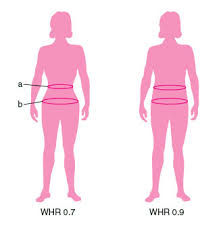Health
What's in a Voice?
Vocal characteristics encode information about health, fertility, and body shape
Posted May 16, 2016
Mammals use their voices for a variety of interesting purposes, including intra-species communication, threat/display, courtship, navigation, and hunting. Among mammal species, some vocal features correlate well with aspects of body size and shape. For example, the larger the animal, the deeper the voice. No big surprise there.
However, within a given species, and within each sex, correlations between vocal properties and body size are less clear. For example, among male gorillas, the pitch of the voice does not correlate particularly well with body size. The same is true in humans. Body size only weakly predicts the depth of the voice and what little correlation there is seems to be a function of height alone, not weight or muscle mass.

Voices have many other features besides pitch. Researchers have found that "formant frequencies" correlate with some sex-specific physical traits in some of our fellow primates. In voice science, formants refer to the acoustic resonance of the vocal tract and are roughly proportional to the length of the vocal tract. In most mammals, including humans, taller individuals typically have longer vocal tracts than do shorter ones, and as a result, have lower formant frequencies and more resonant voices.
Researchers recently asked what information is encoded in our voices. To do this, they studied a multicultural sample of more than 700 men and women. They then measured 19 different features of their voices as well as eight different features of body shape and size, including obvious things like height, weight, and BMI but also the circumference of the chest, hips, and waist and the various ratios of those circumferences to each other (hip-to-chest ratio, waist-to-chest ratio, etc.) They then cross-analyzed the various vocal qualities and physical measurements to look for correlations.

They found some interesting things. (Read a longer summary here.) The most provocative correlation they discovered was that, in women, several vocal features correlate with a very specific aspect of body shape: waist-to-hip ratio. Those vocal features are jitter, shimmer, the standard deviation/variation in voice pitch, and, once again, formant frequencies. While some of these features require specialized audiological equipment to detect, others can easily be discerned by an untrained listener.
Waist-to-hip ratio is a very special physical feature in women because it is the closest thing to a universally appreciated standard of beauty. Among cultures, historical periods, and even individuals, there is great variability in what is viewed as the most attractive features in women. Height, skin tone, hair texture and style, chest size, there is no shortage of diversity in tastes in the female aesthetic. However, one commonality that cuts across all lines of culture, history, and even sexuality and gender, is that a low waist-to-hip ratio is considered particularly attractive in women. This is true for petite and full figures. This can be seen as a "skinny waist" or "big hips." It is the ratio that seems to be the key.

It is probably no coincidence that waist-to-hip ratio is also a surprisingly good predictor of overall health in women. Health conditions from diabetes to cardiovascular disease correlate with high waist-hip ratios and some public health officials tout this one measure as the best overall indicator of health, better even than weight or body-mass index (BMI).
A low waist-hip ratio also correlates with fertility. Women with high ratios are more likely to experience difficulty getting pregnant and women with low ratios are more likely to have big families.
This is what makes the correlation of waist-hip ratio with vocal features so intriguing. There is now a linkage between vocal features, physical attraction, and markers of good health and fertility. From an evolutionary standpoint, there would be great value for a male to be able to get a summary of a female's health and fertility when deciding whom to pursue as a mate. It also makes good sense that physical attraction, i.e. sex drive, would focus on reliable indicators of health and fertility.
To bring this connection full circle, we would predict that these vocal features that correlate with waist-hip ratio are also rated as attractive. Indeed, this has also been found. Some of the same vocal features that correlate with a high waist-hip ratio are often components of female voices that men find attractive.
What does all this mean? The simplest explanation is that humans have evolved the ability to detect, with both visual cues (waist-hip ratio) and auditory cues (vocal features), health and fertility in women. This would have substantial value for males in their pursuit of evolutionary fitness, that is, many successful offspring.
However, that may explain the attraction, but not the correlation itself. What does waist-hip ratio have to do with health? What does it have to do with fertility? And most oddly, what do vocal features have to do with any of this? What is the mechanism of this connection?
The most likely explanation is that these are all shared affects of the reproductive hormones estrogen, progesterone, and prolactin. In the right balance, these hormones promote fertility, maintain cardiovascular health, and also direct body fat distribution around the hips, leading to the desirable pear shape of low waist-hip ratio. The pear shape itself isn’t “healthy,” but rather it is the side-product, an indicator, of a healthy hormonal balance.
This is a good example of how evolution by natural selection works. Physical traits, and even behaviors, tend to emerge on their own, through random mutation, with no function or goal in mind. Then, ones that provide some unexpected, unplanned benefit are favored and those that reduce success are eliminated.
In this case, the side-effects of sex hormones in females are just that, side-effects. But males who were spontaneously driven to pursue those side-effects found evolutionary success by doing so and then their offspring inherited that same sex drive. Over time, standards of beauty evolved to mirror indicators of health and fertility. That's the genius of natural selection.




